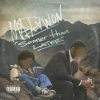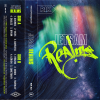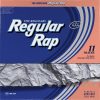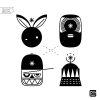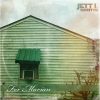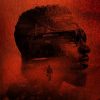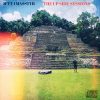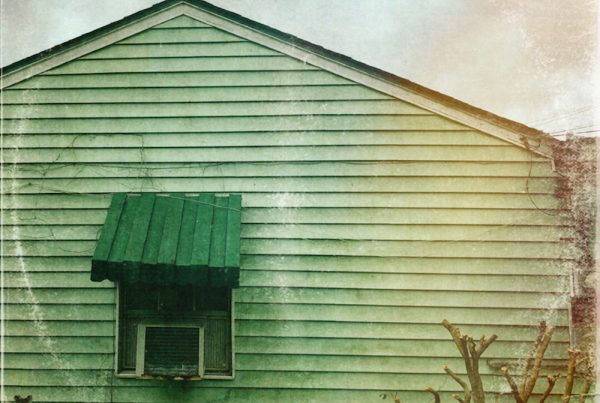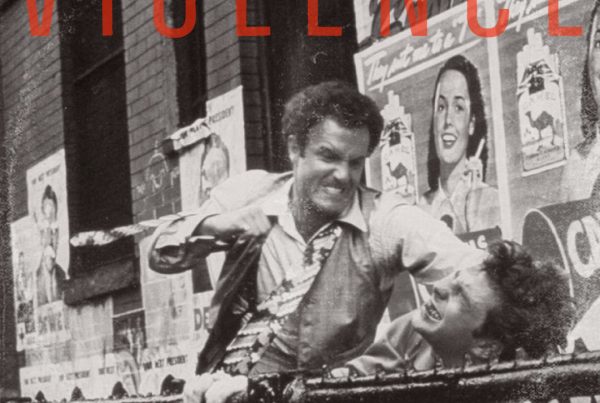Earlier this month, Jamie Benson of Funkadelic Freestyles Radio (an RIK affiliate) sat down with the future soul band Hiatus Kaiyote, who were visiting DC on their recent US tour. The Australian quartet – who just received a flattering write-up of their live show from The New York Times – gave him a whopping 45 minutes of their time, so we had no choice but to break this up into two parts. In Part I, the band discusses how they met, their first trip to the US, their fans, and how they came up with the classification “future soul.”
JAMIE BENSON: I want to make sure we introduce every member of the band. And when you introduce yourselves, I’d love it if you could give your first and second titles – so instead of just the instrument you play, I’m looking for drummer first, spiritual advisor second…
SIMON MAVIN: I’m Simon – I play keyboards in the band and my second title would be…MacGyver! I like to fix stuff, I guess.
PAUL BENDER: I’m Bender – I play bass, and apparently I am the comic relief.
PERRIN MOSS: I am Perrin and I play drums. I am chief climber and stuntman [his band mates laugh].
NAI PALM: He’s our stunt man for every other band member. I’m Nai Palm – lead singer and occasional guitarist/keyboard player. I am the bringer of treasures – I find treasures and shiny things.
JAMIE: From what I understand, you all were busy gigging with different projects before the band came together. What were those respective projects, and how did y’all end up forming the band?
BENDER: For me, I was just kinda doing a bunch of different one-off things – that’s kinda how I met Simon. Just through the general Melbourne working musician thing – wedding gigs and that sort of thing, and doing a lot of one off gigs for people. Nothing that I was incredibly interested in. I was trying to get into some original music. Hiatus was the first thing in Melbourne that I really wanted to put my time into.
PERRIN: I haven’t had as many various projects; I only had one other one, and I wasn’t playing drums in it. I moved to Melbourne with that band, then we broke up and I found these guys.
NAI: [Perrin’s] done production, though. He just released a mixtape under the name Clever Austin.
PERRIN: It’s on Bandcamp and it’s called Hide-Away Headshell.
NAI: So Perrin was a producer before he was a drummer. Much of the production texture you hear is from Perrin and Bender’s backgrounds.
JAMIE: Perrin, I understand you started your career on a pair of turntables. You’re a big hip-hop guy.
PERRIN: Yeah, I am. I started scratching for a long time, as well. I got kinda bored of it. Anything I do I go really hard at for a long time until I can’t find anything more to do with it. Drumming is endless and music is endless, but turntables are a bit harder to get really creative with.
JAMIE: I have zero knowledge of the Melbourne music scene. But I know that in the US, it often depends on the city you start in as to whether or not you’re discovered or make it big. Were local fans supportive of your genre-bending music? Or did it take them awhile to understand – “this is unlike anything else, and that’s a good thing.”
BENDER: They were really supportive from the get-go.
NAI: Yeah. I was touring just around Melbourne and rural Australia as a solo artist and for a really long time people kept being like, “you should get a band together, you should get a band together.” It just never was really right. I dabbled in this Aztec Colombia Dub band for a bit and then I met Bender, Perrin, and Simon and it all came together. These are the type of musicians I’ve been waiting to work with. I feel like there was already a strong community of people that were waiting for me to get a band together. Once the combination of the calibration of our musicianship came together, people were like, “alright, it’s worth checking out.” I felt like there was a lot of support.
JAMIE: Was there a specific moment when you all realized that you had something special?
NAI: From the first rehearsal, for sure. I met Bender and Perrin about a year or so before we got the band together, but like I said – we weren’t ready to have it evolve to that next stage yet. Once that decision was made, it just came together pretty quickly. The natural chemistry musically you could feel from the first time the four of us got into a room and played a tune.
PERRIN: For me, it was “Nakamarra.” Simon was playing real lush chords and we were just mucking around with ideas. We did the bridge section of that song and from that moment on…it was really fucking awesome, and I realized I’d been wanting to do something like this for a long time.
JAMIE: Tell me about the first few US shows. First of all, what kind of music fans – or just what kind of people in general – did you see when you looked out into the crowd?
NAI: The first one we did as band collectively was at SXSW. That was a bit weird because South By is such a big deal, and we got there and the first gig was at a burger joint. That same day we did [another] gig and the Pharcyde played directly after us and we had no idea. In the beginning – because we’re a new band and it’s like we were supporting ourselves financially just off our music before we had a record label – I went to the US to represent Hiatus, but I was just playing solo for the CMJ showcase. The first show for [CMJ] was at the Rockwood Music Hall in New York and it was packed – people lining up down the street. I did a cover of “My Cherie Amour,” and singing and growing up listening to Stevie Wonder and Aretha and Otis, that’s how I can sing. From growing up on that stuff and never having that community of people that really get it, once I came to New York I was doing vocal trills and having women scream and saying, “do it baby!”
They just don’t do that back home. I feel like since we’ve been touring as band, as well – there’s been people like right up watching each instrumentalist and screaming. Everyone’s obsessed with taking photos here.
JAMIE: That’s not really a thing back home?
NAI: Not like it is here.
JAMIE: We talked to the hip-hop artist Black Milk last week, and he mentioned that his favorite part of performing is being able to present a different live interpretation of his studio songs at each show he does. How important is it to you to perform a different version of your records at each show? Do you switch it up based on the crowd?
SIMON: It’s incredibly important. That’s one of the distinctions we made early – we were going to have a live sound as well as a studio sound. We’ve just kinda always tried to push it more when we’re doing the live stuff. We just mess around in the rehearsal room and try and get fresh ideas about tunes, pushing them in other directions.
BENDER: We’re always just trying to make it interesting for ourselves. If it’s interesting and it’s fun for us, then it’s going to be fun for people who are checking it out.
PERRIN: There’s going to be more energy.
BENDER: If we’re excited, then [the audience] will be excited, because we’re going to be having a good time. Pushing it new ways, just trying to mess with it a bit.
SIMON: This day in age, there’s no point in trying to represent the record that you’ve got – a spitting image of it onstage. It’s never going to sound as good as what you have in your house. That whole thing of listening to a record – if you do it a lot and know it, [the audience realizes] they played it exactly the same.
NAI: I’ve experienced that with a pretty big name [artist]. I’m not going to say which artist, but they’re a massive artist who I LOVE and they’ve been a band for over 20 years. I was so excited about seeing them, and I saw them and I was like, “I could just listen to their CD at home and it would impact me more.” It was just too true to the recordings and I felt like they were kinda trapped by that…rather than expressing the intention of what the song might’ve been originally and why they made it. But at the same time I feel like it’s important to have both elements because people do want to sing along and want that familiarity. If you flip stuff too hard, then you can go too hard one way. Keeping it interesting for us and interactive for them, but also keeping it true to why they fell in love with the record.
BENDER: I feel like it’s like holding onto that energy from when a song first starts coming together, you know? If you keep doing it the same way, the song will keep sounding the same way and won’t have that energy anymore.
PERRIN: Jill Scott does it really well. She does crazy things with her tracks.
JAMIE: That genre-bending music of yours – well it seems like you already have an advantage. You’ve got all these different type of music fans – jazz cats, hip-hop heads, hipsters, and soul junkies – addicted to your music with just one studio project out.
NAI: We’ve had metal heads, too.
JAMIE: Metal heads?
NAI: Yeah, in Montreal there was this guy wearing a Slayer shirt and headbanging.
BENDER: There’s always a couple of older guys too, that you don’t expect.
NAI: Like ancient! In Boston, there was this guy who was like 70 years old and he was by himself right in the middle of the dance floor.
BENDER: We also have really young kids. There’s a couple of videos floating around right now on YouTube of kids dancing to our songs. The last time we played in Philly we had some girls who were like 13 there with their parents.
NAI: The best one was when we were in Raleigh, NC. The promoter’s daughter was only 17 months old and she loves “Rainbow Rhodes.” She was walking around [with her mom] singing it; her name is Willa. She was breastfeeding during our soundcheck in the back of the venue and as soon as we starting soundchecking that song she was like, “this is my jam!” She tried to climb on the stage and she could actually sing it! [the band imitates the toddler signing]. The pitch, as well – I have trouble singing that and she was bang-on.
JAMIE: You’ve found a way to define this music – though I realize you’d rather not have to define it at all – and you’ve called it future soul. Why?
BENDER: It’s the title for now.
PERRIN: It comes from there [points to his heart].
SIMON: It’s kind of the same as [the band name] Hiatus Kaiyote. You have to interpret it your own way. Future soul – what does it mean? You really make your own interpretation of it. I’m seeing [the year] 2080 and sci-fi things flying around, with soul music [band members laugh].
NAI: For example, the genre of world music; it’s like, “yeah, I play world music.” Oh yeah, I know what that is but at the same time, is it Mongolian throat singing? Or is it like Russian drinking songs? That could be so vast, but that one title [of world music] seems to make sense categorizing it even though it’s impossible to categorize.
SIMON: I remember seeing Béla Fleck and Flecktones in the world category once.
BENDER: It’s like that thing, you know, back in the days when they still had video stores. It’s like any movie that isn’t totally predictable, or has a strange type of take and is just in the art house section. You know what I mean? “Well, I guess it’s funny so it’s kind of a comedy but it’s also kinda dramatic since it’s a bit tense but it’s just like they fucked with the formula so…art house?” One of the people we really admire is Bjork, and no one can tell you what genre Bjork is; Bjork is just Bjork. She’s kinda gotten to the point of her career where nobody really has to talk about that anymore. She just is who she is and she makes whatever the hell she wants to. It’s just a melody that represents an emotion that she has at a particular time. It doesn’t really have to be a genre. It doesn’t have to be one thing.
JAMIE: For now, we’ll call it future soul.
BENDER: Yeah. The words “future soul” exist pretty much because otherwise we have to have that entire conversation we just had, or we could just say it in two words.
NAI: We also have “wonder core,” and “multi-dimensional poly-rhythmic gangster shit.” And Bender came up with one called “post beard.”
BENDER: Post beard galactic love attack.
NAI: Future soul is the one that stuck out of all of those.
Part II of Funkadelic Freestyles’ interview with Hiatus Kaiyote drops Monday, November 18th on Rappers I Know. We talk in depth about their debut EP, Tawk Tomahawk, which you can stream here and .



